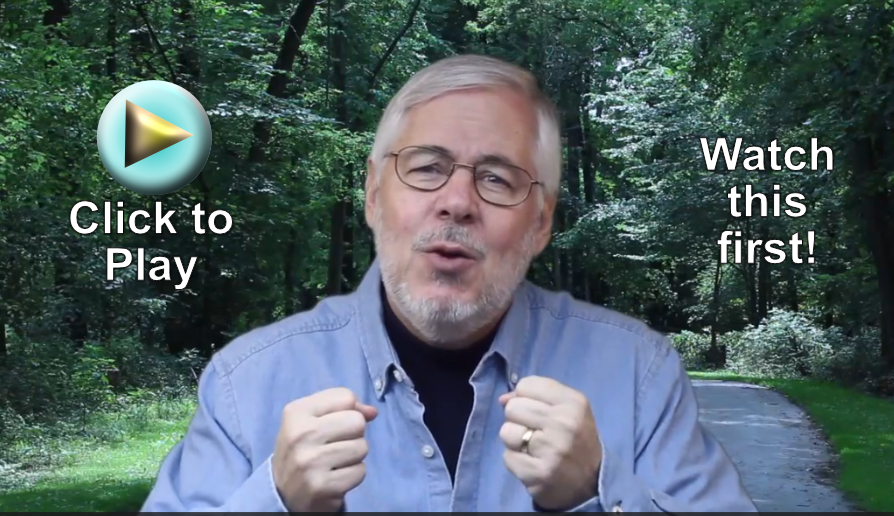Welcome to the AFTO Blog. If you were invited to watch a video, or this is your first time visiting our website, please watch at least the first three videos from our eleven part series then come on back and enjoy the blog, listen to the podcasts and subscribe to them; then join us in the forums!
069 – Repentance and Confession
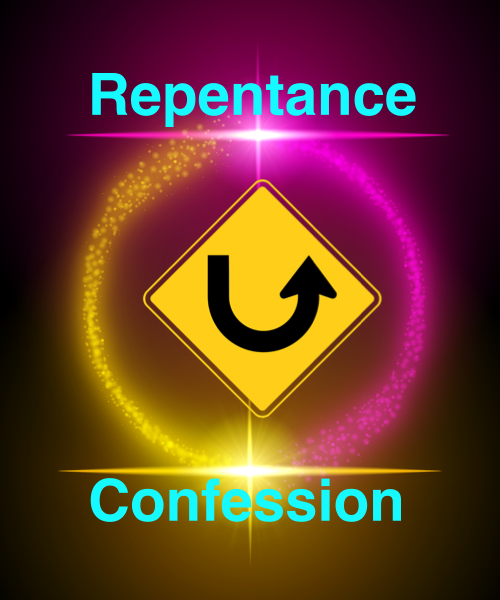
Editor’s Note: This is the fifth lesson from our eleven part video series called, “A Faith that Obeys.” You can find the original video and transcript HERE. We are dropping this lesson into our regular podcast feed so that the information can reach a wider audience. In this lesson, we will review the the next two steps in the Biblical Plan of Salvation which are, Repentance and Confession of Christ.
Hearing and Accepting Come First
When someone hears the word and accepts it, they have taken the first two steps in the Biblical Plan of Salvation. God, at this point, gives them something they previously did not have. They now have the right or the power to become a child of God. Hearing and accepting the message are great first steps and it’s clear from the scriptures we are placed into a different spiritual classification than we were in before we accepted the message. It indicates a soft heart, a willing heart, a heart that we still must have… but the commands, as required by God, are not yet completed with just these two steps.
In Matthew 7:21 Jesus said: Not everyone who says to me, Lord, Lord, will enter the kingdom of heaven but only he who does the will of my Father who is in Heaven.
Doing the Will of God
Did you notice something? Jesus just said the same thing we have been saying. It is not enough of call him Lord, or to simply believe in Him. There is something else we must obey. What is it? Doing the will of God! This is our goal, to do the will of the Father. This is a call to action. Based on what we have seen so far, have you noticed anything in the passages we’ve examined which we could do or act upon? You know, actions we could take which might be considered, “doing the will of the Father?” We already know the first two actions, hear the word and accept the word. These are both things God tell’s us to do. But there was something else in those passages which we may have missed. Remember, we are looking for Biblical commands or religious events which happen in a believer’s life and we are carefully trying to determine if those events are in any way connected with the forgiveness of sins. When we find one, we want to see if the forgiveness of sins or the idea of being saved happens before this event or after this event.
Let’s look at those two previous passages again. Here’s the passage which told us about hearing the word.
James 1:21 Therefore, get rid of all moral filth and the evil that is so prevalent and humbly accept the word planted in you, which can save you.
Do you see it? It’s right at the beginning. There is something in addition to hearing and accepting the word which precedes salvation. It’s something we must DO. Yep, getting rid of all moral filth from our lives. In religious terms, this is called repentance. The word repent means to change one’s mind or purpose. It means to stop doing wrong things and start doing right things. It’s like a U-turn. You were going one direction… now you’re going a new direction.
Repentance Always Comes Before Conversion
Now, this is critical. Notice that repentance also comes before salvation! Repentance, as it relates to the issue of the “Born Again” experience or the forgiveness of sins, never occurs anywhere in the Bible after someone is saved. While it is true that people will still sin after they are saved and they will continue in repentance, this is vastly different from the need to repent, or “get rid of all moral filth,” before they are saved.
But, let’s carefully check this out. Biblically speaking, is repentance from sin really necessary to be saved? After all, this is an act which is squarely on our shoulders. This is a specific action we take. Some people might even suggest that this a kind of works salvation since it is something we do. Once again let’s turn to the scriptures to find out.
Acts 3:19 Repent, then, and turn to God, so that your sins may be wiped out, that times of refreshing may come from the Lord,
Well, this is pretty clear! Does repentance come before sins are wiped out or after? Before. Is repentance a suggestion? No. Is it optional? No. Is it a command we can obey? Sure!
Let’s mark the third step on our illustration, “Repentance” and let’s move that line of salvation up the stairs just a little bit because it is obvious, repentance precedes the forgiveness of sins and that is consistent throughout all of scripture.
But Repentance Alone is Not Enough
Let me interject a quick personal note here. Over the years, I’ve had many religious friends who believe that accepting Christ is all one needs to do in order to be saved. When I show them this very clear, very obvious command and requirement in the plan of salvation and that it precedes the forgiveness of sins, they easily agree because it is so obvious, but suddenly realize there are no longer just two steps, as they previously believed. Things start to get a little uncomfortable. It’s just too hard argue with this. This passage is easy to understand. We must repent before sins are forgiven. If you are feeling defensive, take a breath, pray. God is showing you something really awesome and I have a feeling, He would not be doing this if he has not seen something in your heart which is ready to hear it.
Finally, I want to show you something interesting. There was a really small but important word used in both of these two passages. It is the word “and.”
Look how it is used in James 1:21 and Acts 3:19. It locks together two clauses. This is referred to by linguists as a “coordinating conjunction.” This conjunction means that we can’t get to the solution if we don’t do both of the things the scripture is telling us to do! We can’t pick and choose! You will be amazed how significant this little conjunction will become in our future studies. Where the Bible connects two things together in the plan of salvation, we must leave them connected. The Bible can’t be altered!
Confession of Jesus as Lord
Now, let’s talk about the fourth step. We have already seen this one too. Do you know what it was? Let’s look at the other one of our earlier passages again.
Romans 10:9 That if you confess with your mouth, Jesus is Lord, and believe in your heart that God raised him from the dead, you will be saved.
I’ll bet you just noticed the word “and,” didn’t you? This was the passage where we connected belief with salvation. But notice, confessing Jesus as Lord is just as important too! And take a look, it also precedes salvation.
So, let’s add “Confession” to our illustration as the fourth step. And let’s move that line which indicates the forgiveness of sins upward as well. Now the Biblical plan of salvation looks like this. Hear, Accept, Repent, and Confess. Very simple, very clear, very Biblical. If we do not obey these four commands, we have not obeyed the Gospel and sins have not yet been forgiven, regardless of what we may have felt or experienced. We do not rely on our emotions as our confirmation of truth, we rely only on the scriptures.
It’s Not a Buffet
At this point, we have four very clear steps which occur in the Biblical plan of salvation. But I’m an American! I have choices. I have rights! What if I decided to pick and choose which ones I wanted to do? Do you think God would accept that? What if the only thing I wanted to do was repent… you know… get my life cleaned up? Would that be enough? Can I repent of my sins but reject the Gospel or refuse to confess Jesus as Lord and still be saved? Of course not. It’s obvious that all of the things we have looked at so far are part of a Biblical plan of salvation. They all come before the forgiveness of sins. We must obey all four, not just the ones we favor or like. This is where dangerous traditions take a powerful, and sometimes aggressive stand. When the defenses go up, the arguments start. We hear things like: “But this is how my church does it.” or “This is what the Pope says.” or “This is how we have always done it!” Don’t walk on that road. Turn away from traditions, turn into the Bible.
Let’s move on. I want to introduce the fifth step in the Biblical Plan of Salvation but before I do that, we need to talk about another amazing and wonderful benefit of becoming a Christian. Do your remember when we discussed the grammar of the Plan of Salvation? We talked about the first two blessings bestowed on every true Christian… our sins are forgiven by God and we are guaranteed that we will go to Heaven when we die.
Don’t Forget the Holy Spirit
Well, there is a third blessing and some of you may have noticed that it was missing. A person who follows the Biblical Plan of Salvation also receives the gift of the Holy Spirit. This is not the miraculous gifts of the Holy Spirit discussed in the Bible, this is the indwelling gift of the Holy Spirit who comes into you and lives with you as a counselor, comforter, friend and security guard. Look at this passage.
Acts 5:32 We are witnesses of these things, and so is the Holy Spirit, whom God has given to those who obey him.
This is a promise to every single Christian. But, let’s be clear, God only gives His Holy Spirit to people who obey him. It’s a one time event. The Holy Spirit does not come and go. He moves in for good when we obey the Gospel. We will be talking a lot more about this subject in a future lesson but for now, notice that the Holy Spirit is given after obedience, not before! Quite interesting! And, I’ll bet you already guessed, this is our fifth step!
Let’s label our fifth step obedience.
Next, I want to show you something really important. Remember when I said that Satan hijacks the plan of salvation right before repentance? In the next lesson, I want you to see how he does it and help you understand how easy it is to fall victim to his scheme. After that, armed with this knowledge, we will then talk about this last step in the Biblical Plan of Salvation… obedience.
Enjoy!![]()
Dana Haynes
Listen to the Podcast Now
068 – Hearing and Accepting the Message

Editor’s Note: This is the fourth lesson from our eleven part video series called, “A Faith that Obeys.” You can find the original video and transcript HERE. We are dropping this lesson into our regular podcast feed so that the information can reach a wider audience. In this lesson, we will review the the first two steps in the Biblical Plan of Salvation which are, Hearing the Message of the Gospel and Accepting the Message of the Gospel.
The Entire World Hears the Gospel
In this world of ours today the scriptures span the globe. There are very few places left, if any, where the name of Jesus has not been proclaimed. Millions of people have put their faith in Jesus Christ as their personal Lord and Savior. At some point in the past, you perhaps made a personal commitment to Jesus because of something you either read or heard. Somebody, sometime, somehow told you about Jesus
The story about Jesus, his death and resurrection is called the Gospel. And hearing the Gospel message is the first step everyone takes in the Biblical plan of salvation. I am unaware of any Christian group which does not recognize that there is a process one goes through on the way to salvation. Sometimes we illustrate this process using clever metaphors. These wonderful illustrations are designed to help us understand the plan of salvation clearly. One popular metaphor is called “The Romans Road.”
You may have heard of it. Using the book of Romans, in the Bible, we can trace out a pathway which leads to salvation. The metaphor we will use to illustrate the Biblical Plan of Salvation, is not a pathway but a staircase, as I mentioned in the last lesson. Just as there are steps we travel on the Roman Road, there are several steps on our staircase which every person takes on their journey to salvation, or the forgiveness of sins. Here’s the illustration of our metaphor.
The First Two Steps – Hearing and Accepting the Gospel
We have already identified the first step, so let’s label this first step, “Hearing the Message.” Every person in the history of the world, who has ever come to know Jesus, has taken this first step. This should be pretty obvious! If you consider yourself a Christian, that means you heard the Gospel, you made a conscious decision to respond positively. Perhaps you were in a church, listening to the radio, watching the TV or a friend brought the message to you. You decided to make Jesus, Lord of your life. You may remember that day clearly. You made a decision. You accepted the message; you didn’t reject the message. And guess what, that would be the second step in the Biblical plan of salvation.
Let’s label the second step, “Accepting the Message.” Again, this is pretty obvious. For someone to be saved, they must accept the Gospel message. Rejecting it would get them nowhere!
Be Super Careful. Never Confuse Repentance with Salvation
For many people, it is at this point, as they surrender their will to Jesus and make Him Lord of their lives, that they might feel an inexpressible joy and relief as they understand they have crossed over from a dark life of sin and have been born again into the wonderful light of salvation. They are comforted by the fact that they will never walk alone again, they will have their Lord and Savior walking with them. The point in time when this occurs is what we previously called a “salvation experience.”
The goal of this series, “A Faith that Obeys,” is to identify the exact point in time when this “Salvation Experience” occurs. Most people who call themselves Evangelical Christians can point back to a specific point in time… in the past… when a “salvation experience” happened for them. This is the moment in time which they would point back to and say, “That’s when and where I became a Christian.” or “That’s the point in time I was Born Again.”
The Stumbling Block of the Sinner’s Prayer
Many churches use a well know method, which was developed in the late 1800’s, to help folks respond to the Gospel message. It’s called “The Sinner’s Prayer.” You may have prayed it or something similar. Using this technique, a minister, preacher or some other leader will ask someone who has heard the message and wishes to responded positively, to recite a brief, simple prayer which might sound something like this…
“Lord Jesus, I recognize that I am a sinner and I need you in my life. I know you are standing at the door of my heart, knocking to come in. Lord Jesus, right here and right now, I invite you into my heart. Save me from my sin and help me live my life for you. Amen.”
For the vast majority of people with an evangelical background, this, or something very similar, is how they became a Christian, they gave their life to Christ or “Accepted Christ.” Can you think back to an exact time and place when this happened for you? Mark that clearly in your mind. Jot it down on a sheet of paper. By the way, this was my experience at about 22 years of age. I prayed the “Sinner’s Prayer” with a neighbor friend, accepted Christ and invited Jesus into my heart. Most folks believe, when someone accepts Christ, they are saved; which means, as we have discussed, their sins are forgiven and they begin their new life in Christ.
Let’s mark a “Line of Salvation” right above the second step on our illustration to indicate that the forgiveness of sins occurs at this point in time. Remember, the forgiveness of sins equals saved and saved means this is the exact point in time you were born again and became a Christian.
Born again = Christian = Saved = Sins are Forgiven
Sometimes, if someone accepts Christ through a radio broadcast or television program, they are encouraged to join a local Bible based church in order to experience and be strengthened by the fellowship. New converts are encouraged to read and study their Bible and to live a life that honors God. In many churches, these “babes in Christ” are told that water baptism is a very important command of Jesus and they should be baptized as soon as possible… in obedience to the Lord, since they are now been saved and their sins have been forgiven. Sometimes new converts are taught that water baptism is their first real act of obedience as a new Christian. This is a general overview of the modern plan of salvation which is promoted and used by most of the evangelical world today. Different churches and denominations use different words or phrases and make adjustments to this plan in various ways but basically, this is the plan.
Right Plan or Wrong Plan?
Now, there’s just one problem with the modern plan of salvation. It’s not the Biblical plan. The Bible never teaches us to simply and only believe in Christ for our salvation even though there are scriptures which seem to support that view. It never teaches us to say a prayer to be saved. It never teaches us to ask Jesus to come into our heart. It does not teach that our sins are forgiven as a result of decisions we make or actions we take outside of Biblical obedience. We are not saved by works, things we do. The Bible never uses a phrase like “accept Christ as your personal Lord and savior.” Does this surprise you? There is much more to the Biblical plan of salvation than these first two steps. Something horrible has happened to the plan of salvation over the last millennia. It has been changed! This modern plan is still very very close, but there are critical things missing and out of place. Frankly, this shouldn’t surprise anyone.
This might be summed up as, “accepting Christ for salvation.” When you believe or accept the message and receive Christ as savior, you become a Christian and your sins are forgiven.
Perfect Counterfeiting
Listen. If Satan wanted to offer a counterfeit plan, why would he create a lame one? Remember my $100.00 bill drawn with a green crayon? No one would accept that!
Satan’s counterfeit would need to be so good and so convincing, so very close to the Biblical plan, that it could trick anyone who is unwilling to compare the plan they learned and followed to the Biblical plan of salvation… once you are made aware of it. Satan doesn’t deny the plan, he simply changes some things around, just a little bit, then provides a warm environment in which his lie can grow! Satan’s plan is an absolutely delicious plan served up with very real emotions of joy and love, warm physical feelings and often, some very real experiences. All these are expertly crafted to confirm his lie.
Satan Uses Traps
I hope you are a little concerned at this point. Once again, I’m going to ask you to step back if you’re feeling a little emotionally charged. I am merely asking that you think about, pray about and evaluate the things you are learning. But please, never for a moment think that any of us could not be deceived by that snake. Remember, it has always been his trick to twist or question God’s commands from Eve’s experience in the Garden… to Jesus temptation on the temple roof…. should we be so naive to think he would not try to twist our understanding of the Bible. The only way we can possibly know God’s will and his plan of salvation is to carefully, diligently, study His word keeping a humble attitude and a heart which is open to new understandings.
You know. A counterfeit is never effective unless it’s very convincing very full of proof! But then you’re not a person who would allow your emotions, feelings or even some very real experiences to be more important and more convincing than the scriptures, are you? Remember. I said this would be challenging. It was for me. I told you I had made a very real, very sincere, very solid decision for Christ as a young adult. But I had not yet followed the Biblical Plan of salvation. I was still in my sins and had no power over them at all. I was a very nice, very kind, very loving believer in Jesus, but I was not a Christian. I had been deceived and did not even know it.
Let the Scriptures Lead You
It would not be for years later that God very patiently, very carefully led me to discover the truth for myself. The thing which helped me see my errors more than anything else was my respect and love for the scriptures and an understanding that they are the only reliable authority. I decided, I could not rely on my feelings, emotions or experiences, no matter how real they were for me. They are not my source of religious authority. I had to put a lot of things behind me and be open to the possibility that I had been wrong.
When someone showed me what the Bible actually taught about the plan of salvation, it was so obvious I accepted it quickly and immediately obeyed it, but I did not stop there. I carefully studied everything out for myself and I am still doing so to this very day. I would love to be wrong about all of this and I have tried for 33 years to punch holes in the Biblical Plan in order to make the road just a little bit wider, but the Biblical Plan is too solid, too consistent, too prominent throughout all of scripture and too obvious, once you see it.
In the next few lessons, you will see, with absolute clarity, what the Biblical plan of salvation entails and how beautifully it is organized by God and how easily it’s seen with the heart of a child. You will begin to feel a fire in your bones and see a future for yourself which is going to get super exciting. Now it’s time to dig into the scriptures.
Enjoy!![]()
Dana Haynes
067 – For the Love of Obedience Part 2 – Examine Yourself
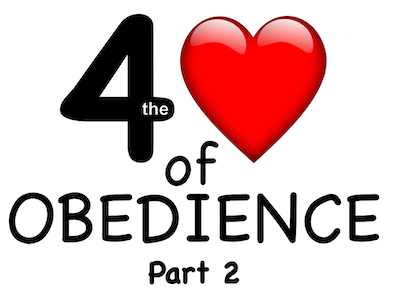
In our last podcast we looked at that intense passage of scripture in 1 John Chapter 2 where John challenges us to obey the commandments of Christ and lets us know, in no uncertain terms, that obedience is not optional. Listen to this passage again…
1 John 2:3-6
We know that we have come to know him if we obey his commands. The man who says, “I know him,” but does not do what he commands is a liar, and the truth is not in him. But if anyone obeys his word, God’s love is truly made complete in him. This is how we know we are in him: 6 Whoever claims to live in him must walk as Jesus did.
What Commands Does Jesus Want Us to Obey?
Just think about that one statement, “God’s love is truly made complete in him.” We need to step back and understand, it is possible for God’s love to “not be made complete” in a person! In our last episode, we learned; John’s conditional statement explains that we do not know Christ unless we are walking in obedience to his commands. But, which commands? We asked, “What commands do I need to obey?” That question launched us into a deep survey of “The Great Commission.”
After that very thorough review, we concluded that if we are not actively involved in obeying the four crisp commands of Christ found in The Great Commission, then we fall short in our obedience. Employing this criteria is a pretty solid, albeit deeply convicting strategy for evaluating our position before God. We are forced by the tenets of The Great Commission to ask ourselves, “Am I going? In other words, “Am I evangelistic?” Am I making disciples? Am I baptizing them? Am I teaching them to make disciples and obey everything Jesus has just taught in The Great Commission and elsewhere? Do you realize; The Great Commission is the only pattern we see for converting souls in the New Testament?
Click here to read the rest of this post.066 – For the Love of Obedience – Part 1
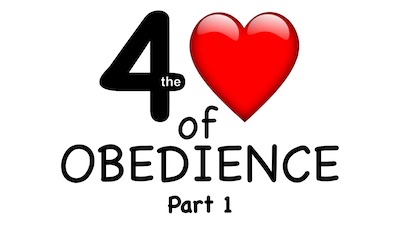
After nearly 70 podcasts here at A Faith that Obeys, there is one aspect of our topic we have never really studied deeply. We’ve skirted around the issue, we’ve included the notion in a number of our discussions but we have never tackled this topic head-on and let the chips fall where they may.
The issue? The fact that scripture teaches us that; love for Christ is directly linked to obedience to Christ.
Study out the word “Obedience”
This showed up on my radar last week when I was creating a list of scriptures that specifically mention obedience. That study is an entire study in and of itself and I would highly encourage you to do a search for the word obey in all its various forms, using your Bible Software or online at BibleGateway.com or BibleStudyTools.com and discover the amazing things revealed by that search. You will be both delighted and challenged.
In my study, I wanted to find scriptures that spoke specifically about obedience being necessary for salvation. In the process, I was struck when I saw how many times obedience is directly connected or associated with love for God and Christ. As I read these passages I was amazed with how dogmatic they are. There is no gray area. We either love God and Jesus through our obedience or we do not.
What we are about to look at we have seen before but never in such a challenging way… never so directly.
A Quick Prayer for a Soft Heart
Lets begin with a prayer because I think we’re gonna need it!
God and Father, please be with us as we look at these challenging scriptures. Help our hearts be soft and receptive to the facts we are about to see. Help us be willing to change anything we need to change in our lives in order to follow you more closely. In Jesus name I pray, Amen.
In this podcast, let’s begin by talking about obedience in general and then talk about how it relates to the love of Christ. Here’s probably the most challenging scripture. It is found in 1 John.
1 John 2:3-6
We know that we have come to know him if we obey his commands. The man who says, I know him, but does not do what he commands is a liar, and the truth is not in him. But if anyone obeys his word, Gods love is truly made complete in him. This is how we know we are in him: Whoever claims to live in him must walk as Jesus did.
This is a scripture about salvation.
Knowing Christ Does Not Mean Christ Knows Me!
When John speaks about coming to know him, he is talking about a person’s relationship with Jesus. Implied in his assertion is the fact that not only have we come to know Jesus, but Jesus knows us, too. I point this out because I am recalling those folks back in Matthew 7 who knew Jesus super intimately and were doing amazing things for him but Jesus never knew them. There are two parts to the equation, right?
In this 1 John passage, it is clear that we are talking to real disciples of Jesus. John is talking to Christians. We also know this because he is comparing the “we” of the first sentence with “the man” of the second sentence; who is clearly lost. Here it is again for reference.
“We know that we have come to know him if we obey his commands. The man who says, I know him, but does not do what he commands is a liar and the truth is not in him.”
Without Obedience, We Do Not Know Christ
Now notice something critical. This first sentence is conditional. It contains an if/then statement.
We know that we have come to know him… IF we obey his commands.
Click here to read the rest of this post.065 – The Modern Plan of Salvation
Editor’s Note: This is the third lesson from our eleven part video series called, “A Faith that Obeys.” You can find the original video and transcript HERE. We are dropping this lesson into our regular podcast feed so that the information can reach a wider audience. In this lesson, we will review the Modern Plan of Salvation which includes practices like “The Sinner’s Prayer” and “Accepting Christ for Salvation.”
Learning about Jesus

In this world of ours today the scriptures span the globe. There are very few places left, if any, where the name of Jesus has not been proclaimed. Millions of people have put their faith in Jesus Christ as their personal Lord and Savior. At some point in the past, you perhaps made a personal commitment to Jesus because of something you either read or heard. Somebody, sometime, somehow told you about Jesus
The story about Jesus, his death and resurrection is called the Gospel. And hearing the Gospel message is the first step everyone takes in the Biblical plan of salvation. I am unaware of any Christian group which does not recognize that there is a process one goes through on the way to salvation. Sometimes we illustrate this process using clever metaphors. These wonderful illustrations are designed to help us understand the plan of salvation clearly. One popular metaphor is called “The Romans Road.”
The Roman’s Road
You may have heard of it. Using the book of Romans, in the Bible, we can trace out a pathway which leads to salvation. The metaphor we will use to illustrate the Biblical Plan of Salvation, is not a pathway but a staircase, as I mentioned in the last lesson. Just as there are steps we travel on the Roman Road, there are several steps on our staircase which every person takes on their journey to salvation, or the forgiveness of sins. Here’s the illustration of our metaphor.
The Steps to Salvation
We have already identified the first step, so let’s label this first step, “Hearing the Message.” Every person in the history of the world, who has ever come to know Jesus, has taken this first step. This should be pretty obvious! If you consider yourself a Christian, that means you heard the Gospel, you made a conscious decision to respond positively. Perhaps you were in a church, listening to the radio, watching the TV or a friend brought the message to you. You decided to make Jesus, Lord of your life. You may remember that day clearly. You made a decision. You accepted the message; you didn’t reject the message. And guess what, that would be the second step in the Biblical plan of salvation.
Click here to read the rest of this post.064 – Do I need to be baptized again?
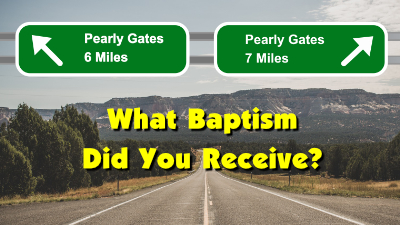
Have you ever considered our tagline here at A Faith that Obeys? It reads, “Rethinking the Traditional Plan of Salvation.” Now, I must admit, this does sound a bit presumptuous doesn’t it? Hopefully the tagline provides a crisp clarity to the issue we are debating and anyone piqued enough to investigate this apparent arrogance, discovers a warm and welcoming place to explore the age old debate regarding water baptism.
Now, you know me. I gotta pick apart a term! After all, we need to agree on what a word means. Let’s begin with, “Rethinking.” Why are we “rethinking” anything? Well, because we think we might have gotten something wrong or we need to review our understanding of a thing; in this case, The Traditional Plan of Salvation.
Defining Our Terms
A “plan” is an ordered succession of smaller events leading to a specific goal and our plan leads to salvation.
“Salvation” means, a person receives the forgiveness of sins, from God; is moved from a lost state to a saved state and will enjoy the benefits of the indwelling gift of the Holy Spirit and the promise of eternal life with God in heaven.
“Traditional” means; the plan is something which has been used and reused for a very long time and is assumed to be correct.
Our process of rethinking, leads us to probe, poke holes in and otherwise scrutinize the assertions made by the traditional plan. At A Faith that Obeys, we’ve discovered the primary and most glaring difference between the Traditional Plan and the Biblical Plan is this small, seemingly insignificant fact. Listen carefully. The only difference between the two plans is that the declaration of salvation is made at different points along the same common path. Let me explain because this issue can be a little hard to see.
Click here to read the rest of this post.063 – Awesome QuietTimes
How would you like to take your prayer life and Bible Study to a higher level than you have ever experienced before? How would you like to feel like your time with God was deeper, more intimate, more vibrant, and authentic? That would be awesome, right?

In this lesson, you are going to learn two blow-away secrets that will absolutely change the way you pray and the results you experience! Let’s go!
All good relationships are based on two things; time together and communication. Our relationship with God is no exception. If we want a rich, real relationship with God, then, we spend quality time with Him by reading His Word and Praying. These two specific activities can be a pretty good barometer of how well we are doing spiritually. When someone is not spending time with God in Prayer and Bible Study, they are neglecting the most important relationship a human being can have. To have a great relationship with God, we need to have great QuietTimes!
What is a QuietTime?
As always, let’s begin by defining our terms. What is a QuietTime?
As the name suggests, it is a time which is quiet. There are no noises to distract us, there are no electronic devices incessantly beeping, there are no other people around and the environment is somewhat protected from interruption. It is a time we spend alone, communicating with God in prayer and allowing Him to communicate with us through his word and through the thoughts and ideas which stir our hearts and our imaginations during these times.
Communication flows in two directions; to God and from God. Our communication to God is done through our prayers. We tell Him what is on our heart. We share our hopes, our dreams and our hardships with Him. We let Him know what is going on with us and we offer up adoration, gratitude and requests for ourselves and for others. Basically, we lay our hearts bare before the Creator of the Universe in the hope He will hear us and respond favorably. And, God does respond.
God’s Communication to Us
Click here to read the rest of this post.062 – The Grammar of the Plan
Editor’s Note: This is the audio from the second lesson about The Biblical Plan of Salvation . You may view the entire video series by starting HERE.

Thanks so much for taking the next step. You obviously have a desire to learn more about this important topic. As we begin, I wanted to say that the things we will look at are really challenging. I know because I have felt some pretty strong feelings as I learned the things you’re about to learn. Please understand that I am submitting these ideas to you with the utmost love and respect. I hope you will feel like that comes through as I make my case.
In the last video, we talked about a Biblical Plan of Salvation. I said that this plan was hidden in the Bible, and in plain sight. I said, even the most learned scholars miss it and, even explained why they miss it… they do not have the heart of a child.
I’m about to show you that Biblical plan of salvation, but before we begin, let’s lock down some of the basic Bible grammar used to define the plan. You probably know most of this but let’s take a minute to lock it down carefully. This way, there will be no confusion or disagreement about terms and definitions.
Bible Names for Bible Things
Let’s take a look at this phrase, “God’s Plan of Salvation.”
First, let’s be clear. This is God’s plan, not man’s plan. Man did not create the plan and man can not change the plan. The plan was clearly established in the Bible 2000 years ago and is the same today as it was in the first century. What is a plan? Well, Webster’s dictionary defines the word “Plan,” as a detailed proposal for doing or achieving something. So our plan will contain some sort of ordered actions aimed at achieving the goal, which God has laid before us, salvation. The Biblical plan of salvation may be depicted like a series of stair steps.
Now, I need to stop right here and make sure we understand something important. These steps I am describing are not actions we take in order to be saved but they are observable, verifiable things that happen with us as we move through the plan. We are not talking about some kind of “works salvation” here. You’ll understand this clearly as we move forward. Ok, this brings us to our next term… salvation.
Click here to read the rest of this post.New Video Version Available
When I am producing my Podcast, I am typically sitting in front of an iMac, speaking into a mic and recording everything on a piece of software called “Sound Studio.” It is super easy to use and is great for editing. Recently it occurred to me that maybe I should be recording the video of my sessions as well.
When I am recording, there are lots of goofs, pauses, hiccups and all manner of things which make editing absolutely essential. You never sit down and just record a perfect first take. I began to wonder if I could edit as easily in Final Cut Pro as I do in Sound Studio. The answer is, “Yeah… pretty much.” And not only that, but I can drop the scriptures into the edited video with ease since they already exist in the script I have been reading from.
Today, I am introducing my first video version of A Faith that Obeys Podcast!
It’s not particularly flashy or heavily edited but it came out pretty good. I added a little background filter, some lighting effects and sweetened the audio just a bit. Overall, I’m pretty happy with the result. The huge bonus is that, I can now toss these up onto YouTube where viewers can watch with Closed Captions and hopefully I can gain a bit more exposure. Drop me a line and let me know what you think. I will embed the videos on the blog so you will have access to them right here without the need to jump over to YouTube, but please go there at least once and subscribe to the channel and hit the “Thumbs Up” button.
Dana Haynes
061 – Why Study the Bible?
When someone first hears about The Biblical Plan of Salvation they often express shock because they never knew there was anything different from what they had been taught and they think all of Christendom teaches the same thing. I tell them, “Yes. People really need to study the Bible in order to become a Christian!”
And when they hear this, it is not uncommon for them to go back to their denominational pastor and ask, “Do I really need to study the Bible to be saved?”
“No, of course not.” Comes the reply. “That’s ridiculous. Look no further than the 3000 who were baptized on the day of Pentecost. Do you think they studied the Bible? No, there was no time. They simply heard Peter’s sermon and accepted Christ!” Now, this reasoning sounds good but let’s think it through.
You Might Not Need to Study the Bible if…
If you have never heard of Jesus, it is true; the simple Gospel message can be accepted and obeyed.
But given our current religious climate it would be highly unlikely. Let me explain.
Three thousand people did indeed become Christians on the day of Pentecost and it is unlikely that any of them opened a scroll to study it. Even the Apostle Paul, by the time Romans was written could say, “Faith comes from hearing the word…” Romans 10:17. So what’s changed? Why would studying the Bible to become a Christian be so important today?
A Lot Has Changed in 2000 Years!
Unlike the day of Pentecost, Christianity has been here for 2000 years and has had ample time to become incredibly perverted. Grab a phone book… if you can still find one… and look up “Churches” in the Yellow Pages. Under that category, you will find a huge number of different sub-headings for all the various denominations and within those denominational divisions a plethora of divided churches. They all teach slightly, and sometimes vastly, different things. That’s why they became divided. The goal and purpose of solid Bible study is to address and correct the denominational aberrations and bias which have been introduced over the last two millennia and bring spiritual thinking and reasoning back under the authority of scripture; since it is the source of our faith. It is, after all, our founder’s book.
This may sound really strange but based on my experience, the first battle I face teaching my religious friends, will be their acceptance of the authority of scripture. One would think this situation would be reversed. A religious person should, by nature, accept the authority of scripture and a person without any formal religion would be less ready to accept scriptural authority. But this is not the case.
Click here to read the rest of this post.

